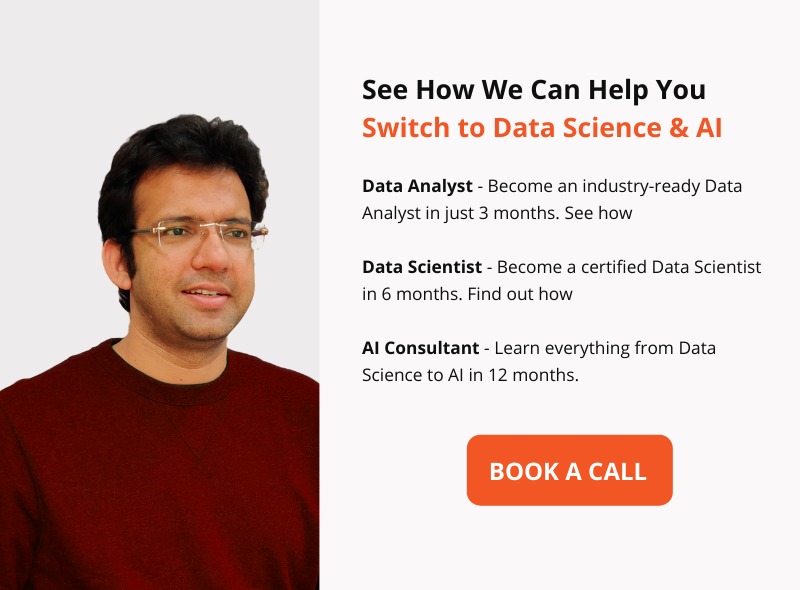Have you ever wondered how machines can recognize patterns just like humans do?
How can they identify faces in images, classify emails as spam or not spam, or even predict stock market trends?
The answer lies in the fascinating field of pattern recognition in machine learning.
In this blog, we will embark on a journey to explore the fundamentals of pattern recognition, its types, tools, scope, advantages, and most importantly, its significance in today’s data-driven world.
How does Pattern Recognition revolutionize Machine Learning?
Pattern recognition is a branch of machine learning that focuses on identifying meaningful patterns or regularities in data. It is a key component of artificial intelligence, enabling machines to make informed decisions based on observed patterns, similarities, and relationships within the data.
By recognizing patterns, machines can learn from past experiences and make accurate predictions or classifications for new, unseen instances.
Types of Pattern Recognition
A. Supervised Learning
Supervised learning involves training a machine learning model using labeled examples. The model learns to recognize patterns by mapping input data to corresponding output labels.
It can then predict the correct label for new, unseen data points. Examples of supervised learning algorithms include decision trees, support vector machines (SVM), and neural networks.
B. Unsupervised Learning
Unsupervised learning aims to identify patterns in unlabeled data. Without prior knowledge or predefined labels, the algorithms analyze the data’s inherent structure, grouping similar instances together.
Clustering algorithms such as k-means clustering and hierarchical clustering are commonly used in unsupervised learning for pattern recognition.
C. Semi-Supervised Learning
As the name suggests, semi-supervised learning combines aspects of both supervised and unsupervised learning. It utilizes a small portion of labeled data along with a larger amount of unlabeled data.
The labeled data guides the learning process, while the unlabeled data helps uncover underlying patterns and enhance model performance.
Tools for Pattern Recognition
1. OpenCV
OpenCV (Open Source Computer Vision Library) is a popular open-source library widely used for pattern recognition tasks. It provides a comprehensive set of functions and algorithms for image and video analysis, object detection, and facial recognition.
2. Scikit-learn
Scikit-learn is a versatile Python library that offers a range of machine learning algorithms and tools. It includes various pattern recognition techniques such as classification, regression, clustering, and dimensionality reduction, making it a valuable resource for implementing pattern recognition models.
3. TensorFlow
Developed by Google, TensorFlow is a powerful framework for building and deploying machine learning models. It provides extensive support for deep learning and neural networks, enabling efficient pattern recognition tasks, including image recognition and natural language processing.
Scope of Pattern Recognition
The scope of pattern recognition extends across numerous domains and applications. Some notable areas where pattern recognition plays a vital role are:
1. Computer Vision
Pattern recognition techniques are used for image and video analysis, object detection, facial recognition, and gesture recognition, revolutionizing fields like autonomous vehicles, surveillance systems, and medical imaging.
2. Natural Language Processing
Pattern recognition enables the extraction of meaningful patterns from text, allowing machines to understand and process human language. It finds applications in sentiment analysis, text classification, and machine translation.
3. Biometrics
Pattern recognition is utilized in biometric systems for identifying individuals based on unique physiological or behavioral traits such as fingerprints, iris patterns, and voice recognition.
Advantages of Pattern Recognition
1. Automation and Efficiency
Pattern recognition enables machines to automate complex tasks, reducing human effort and time. It allows for efficient processing and analysis of vast amounts of data, leading to faster decision-making and improved productivity.
2. Enhanced Accuracy
By recognizing patterns, machines can achieve high accuracy in tasks like image recognition and classification. They can detect subtle patterns that may be difficult for humans to discern, leading to more precise and reliable results.
3. Adaptability
Pattern recognition algorithms can adapt and learn from new data, making them flexible and capable of handling dynamic environments. They can adjust their models and predictions based on changing patterns, ensuring continuous improvement and adaptability.
4. Insights and Discoveries
Pattern recognition often uncovers hidden insights and correlations within datasets that may not be apparent to humans. By identifying patterns, machines can reveal valuable information, leading to new discoveries, innovative solutions, and data-driven decision-making.
Significance in Today’s Data-Driven World
In today’s data-driven world, where vast amounts of information are generated every second, pattern recognition has become indispensable. It allows us to extract knowledge from data, make informed decisions, and gain a deeper understanding of complex phenomena.
Pattern recognition drives advancements in various fields, such as healthcare, finance, marketing, and cybersecurity. It empowers us to leverage the power of data and harness its potential for transformative impact.
Pattern recognition in machine learning is a remarkable field that enables machines to recognize and understand patterns just like humans do. Its various types, tools, and applications make it a crucial component of artificial intelligence.
By uncovering hidden patterns, machines can make accurate predictions, automate tasks, and drive innovation across industries.
As we continue to explore and refine the field of pattern recognition, we can unlock new possibilities and pave the way for a future where intelligent machines coexist with humans, augmenting our capabilities and shaping a better world.
Join Accredian and start your journey from insights to algorithms today! With our extensive collection of Data Science resources, pursue a fulfilling career in data science.
 Pin
PinLet’s make your data-driven dreams a reality!
Contact us for any questions or comments.






